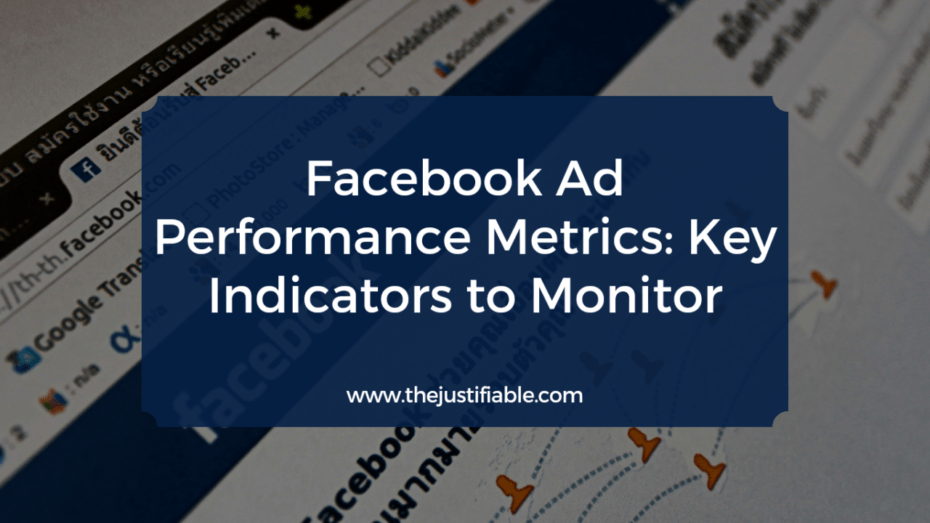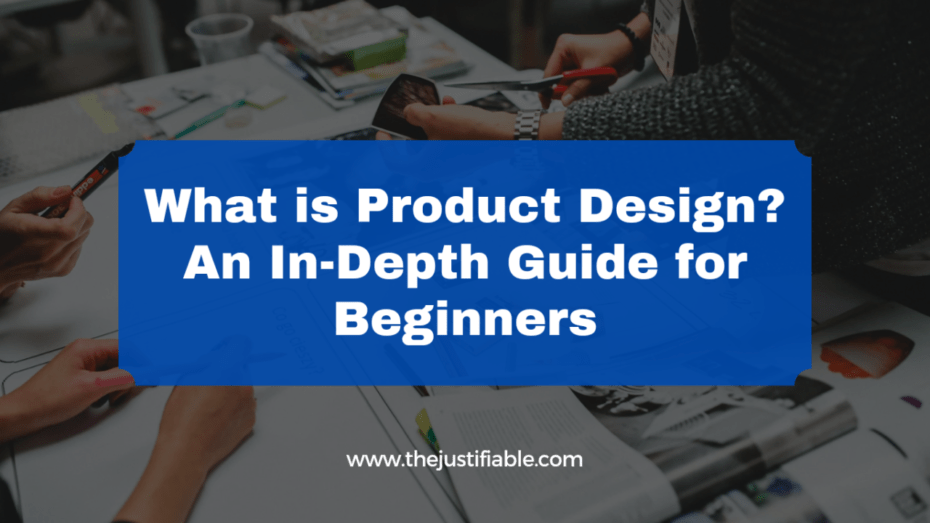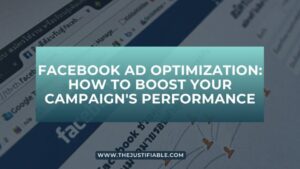Table of Contents
Facebook Ad Performance Metrics! In the world of digital marketing, Facebook remains a formidable platform, connecting brands with billions of potential customers. Key to maximizing your return on investment in this space is understanding and harnessing the power of Facebook ad performance metrics.
These metrics act as the compass guiding your campaign, ensuring your ads connect with the right audience and achieve the desired results.
Understanding Facebook Ad Performance Metrics
As advertisers, it’s crucial to navigate the landscape of social media marketing with precision and insight. This journey begins with understanding Facebook ad performance metrics.
What are Facebook Ad Performance Metrics?
Facebook ad performance metrics are the statistical measures that provide insights into how your ads are performing on Facebook.
They cover a broad range of data points, including how many people have seen your ad (reach and impressions), how many have engaged with it (click-through rate), and ultimately, how many have performed the desired action, such as making a purchase or signing up for a newsletter (conversion rate).
By tracking these metrics, you can gauge the effectiveness of your ads, identifying which ones resonate with your audience and which ones may need adjustment. Additionally, monitoring these metrics can help you optimize your ad spend, ensuring your marketing budget is used as efficiently as possible.
The Importance of Monitoring Facebook Ad Performance
Monitoring your Facebook ad performance is akin to checking your vehicle’s GPS during a road trip. Just as you wouldn’t drive blindly without knowing your direction, you shouldn’t run ads without understanding how they’re performing.
Monitoring Facebook ad performance metrics provides crucial insights that can shape your marketing strategy. It allows you to measure the effectiveness of your ads and identify areas for improvement. If an ad is not performing well, the metrics can help identify the issue – whether it’s the ad’s content, target audience, or timing.
Moreover, tracking your Facebook ad performance aids in optimizing your return on investment. By understanding which ads are most effective, you can allocate more of your budget to high-performing ads and less to those that are underperforming.
The role of the Facebook Ad Manager in monitoring ad performance
Facebook Ad Manager plays a pivotal role in monitoring ad performance. This tool provides a comprehensive dashboard of your ad campaigns, offering a real-time view of your key performance metrics.
With Facebook Ad Manager, you can track reach, impressions, click-through rates, and conversion rates of your ads. Additionally, the tool provides detailed demographic data about the people engaging with your ads, including age, gender, location, and interests. This information can help refine your target audience and improve ad performance.
Further, Facebook Ad Manager offers features for testing and optimization. You can run A/B tests to compare different versions of an ad and determine which performs best. You can also use the tool’s recommendations and automation features to optimize your ad campaigns based on performance metrics.
Understanding and effectively leveraging Facebook Ad Manager can significantly enhance the success of your Facebook advertising efforts, making it an essential tool in your digital marketing toolkit.
Key Facebook Ad Performance Metrics to Monitor
Knowing what to measure and monitor is half the battle won in advertising. Here, we delve into the key Facebook ad performance metrics that will help you assess the success of your campaigns and guide your future strategies.
Reach and Impressions: Gauging Visibility
Reach and impressions are vital metrics to consider when evaluating your ad’s visibility on Facebook. Reach refers to the total number of unique users who have seen your ad, while impressions denote the total number of times your ad was displayed, regardless of whether the same user saw it more than once.
These metrics provide insights into your ad’s penetration within your targeted audience. A large gap between reach and impressions suggests your ad is frequently being displayed to the same users, which could indicate a narrow target audience or an ad that is being shown too often.
Click-Through Rate (CTR): Measuring Engagement
The Click-Through Rate (CTR) is another critical Facebook ad performance metric. It measures the proportion of users who clicked on your ad after seeing it. This metric is calculated by dividing the total number of clicks by the total number of impressions.
A higher CTR generally indicates that your ad is compelling and relevant to the audience, encouraging them to engage. Conversely, a low CTR may suggest that your ad’s messaging needs tweaking or the target audience isn’t aligned with your offer.
Conversion Rate: Tracking Success of Your Goals
The conversion rate is a critical indicator of your ad campaign’s success, tracking the percentage of users who complete the desired action after clicking on your ad. This action could be making a purchase, signing up for a newsletter, downloading an app, or any other goal defined for your campaign.
Monitoring the conversion rate can help identify gaps in your sales funnel and guide optimization efforts. For instance, if you have a high CTR but a low conversion rate, you might need to refine your landing page or offer to better meet your audience’s expectations.
Cost per Action (CPA): Understanding Your Spend Effectiveness
The Cost per Action (CPA) metric shows how much you’re spending to achieve each desired action, such as a purchase or sign-up. By comparing the CPA to the value of the action, you can assess whether your Facebook ad campaign is cost-effective.
A high CPA could indicate that your ad cost is too high for the return it’s generating, suggesting a need for optimizing your ad campaign. This could involve improving your ad creative, targeting a more relevant audience, or adjusting your bid strategy.
Return on Ad Spend (ROAS): Evaluating Your Investment
Return on Ad Spend (ROAS) is a financial metric that shows how much revenue you generate for each dollar spent on advertising. This metric is crucial in evaluating the profitability of your Facebook ad campaigns.
A high ROAS signifies that your ad campaign is successful in generating revenue. If your ROAS is low, it could suggest that your ad spend isn’t translating into sufficient revenue, highlighting a need for campaign optimization.
Frequency: The Delicate Balance between Exposure and Overexposure
Frequency is the average number of times each person sees your ad. This metric helps maintain a balance between ensuring your ad is seen (exposure) and avoiding ad fatigue (overexposure).
If the frequency is too high, users may become irritated by seeing the same ad repeatedly, potentially leading to lower engagement and negative brand perception. However, if it’s too low, your ad may not be seen enough to make an impact. Monitoring and managing frequency is thus essential for maintaining effective ad performance.
Utilizing Facebook Ad Performance Metrics for Optimization
Understanding the metrics is only half the equation. The other half is knowing how to utilize this data effectively for optimization. In this section, we’ll discuss how to leverage insights from Facebook ad performance metrics and employ optimization techniques to improve your advertising success.
Leveraging Insights from Facebook Ad Performance Metrics
The true power of Facebook ad performance metrics lies in the insights they provide. These data points can offer a wealth of information about your target audience, their behavior, and their response to your ads.
For instance, a high Click-Through Rate (CTR) might indicate that your ad’s messaging resonates with your audience. On the other hand, a low conversion rate could suggest a disconnect between your ad and the landing page, perhaps in terms of content or audience expectations.
By studying these metrics, you can discern patterns and trends that inform your advertising strategy. For example, you might find that certain demographic groups are more likely to engage with your ads, informing you to target these groups more aggressively.
Moreover, you can use insights from your ad performance metrics to run experiments. For example, if your ad’s reach is lower than expected, you could test different audience targeting strategies to see which one yields better results.
Optimization Techniques for Improving Facebook Ad Performance
Optimizing your Facebook ad performance isn’t a one-time task – it’s an ongoing process that requires consistent monitoring and adjustment. Here are some techniques to consider:
- Ad Creative: Experiment with different visuals, headlines, and descriptions to see what resonates most with your audience. Remember, what works for one campaign or audience may not work for another.
- Targeting: Refine your audience targeting based on the insights gained from your ad performance metrics. This could involve narrowing or expanding your audience, or adjusting parameters such as age, location, or interests.
- Bidding Strategy: Facebook offers several bidding strategies, such as cost cap, bid cap, and target cost. Experiment with these to find the most cost-effective approach for your campaign.
- Ad Scheduling: Test different times of day or days of the week to run your ads. Your ad performance metrics may reveal when your audience is most active and engaged.
Remember, the key is to test, measure, and iterate. The more you optimize, the better your Facebook ad performance will be.
How to Apply A/B Testing to Improve Facebook Ad Performance
A/B testing is a powerful method for optimizing your Facebook ads. It involves running two versions of an ad simultaneously to see which one performs better.
You can A/B test virtually any aspect of your ad, from the creative elements (like images or headlines) to the audience targeting parameters. The goal is to isolate one variable at a time, so you can accurately attribute any difference in performance to that specific variable.
To conduct an A/B test on Facebook, you can use the “Create Split Test” option in Facebook Ad Manager. This tool allows you to set up your test, choose your variable, and define your budget and schedule. Once the test is live, monitor your ad performance metrics to see which version of the ad is performing better.
By leveraging A/B testing, you can make data-driven decisions and continually improve your Facebook ad performance.
Future Trends in Facebook Ad Performance Monitoring
As technology continues to advance at an exponential pace, the landscape of Facebook ad performance monitoring is expected to evolve significantly.
Notably, the integration of Artificial Intelligence (AI) and Machine Learning (ML), along with the use of predictive analytics, is set to revolutionize the way we manage and optimize Facebook ads.
Impact of AI and Machine Learning on Facebook Ad Performance
AI and ML are poised to have a significant impact on Facebook ad performance monitoring. These technologies can automate the analysis of ad performance metrics, providing more accurate insights and freeing up marketers’ time to focus on strategic decision-making.
For instance, AI-powered tools can process vast amounts of data quickly and accurately, identifying trends and patterns that might be missed by the human eye. This can help marketers uncover valuable insights, such as which demographic groups are most likely to engage with their ads or at what time of day their ads perform best.
Additionally, Machine Learning algorithms can learn from past ad performance to optimize future campaigns. For example, they can adjust targeting parameters or ad scheduling based on what has worked well in the past, maximizing the effectiveness of each ad campaign.
As these technologies become more advanced and accessible, we can expect them to become integral to Facebook ad performance monitoring, offering unprecedented efficiency and accuracy in ad optimization.
Predictive Analytics in Facebook Ad Performance Management
Another exciting development in Facebook ad performance monitoring is the rise of predictive analytics. This involves using statistical models and forecasting techniques to predict future ad performance based on historical data.
With predictive analytics, marketers can forecast the likely outcome of an ad campaign before it even begins. For example, they might predict how many clicks an ad will receive or what the conversion rate will be. This can inform decision-making, allowing marketers to adjust their strategy proactively rather than reacting to performance metrics after the fact.
Moreover, predictive analytics can help with budget allocation. By forecasting the return on ad spend (ROAS) for different campaigns, marketers can allocate their budget more effectively, investing more in campaigns that are predicted to perform well and reducing spend on those expected to underperform.
As we continue to amass more data and develop more sophisticated forecasting models, the role of predictive analytics in Facebook ad performance management is set to grow, offering marketers a powerful tool for optimizing their advertising strategy.






